Emotional Overdrive: Why Following an Ambulance Could Be More Harmful Than Helpful
In moments of crisis, our hearts race and our minds can be overtaken by raw emotion. When a loved one is whisked away in an ambulance, the instinct to follow can feel both protective and urgent. Yet, amid the chaos, this well-meaning impulse may lead to unforeseen hazards on the road. The situation paints a vivid picture of love mixed with panic—a scenario many of us can empathize with.
Imagine the scene: flashing lights, blaring sirens, and a family member, keys in hand, desperately trying to catch up. This frenetic rush, however, can turn into a recipe for disaster. The adrenaline-fueled chase might not only hinder emergency responders but also put innocent lives at risk, urging us to pause and rethink our actions.
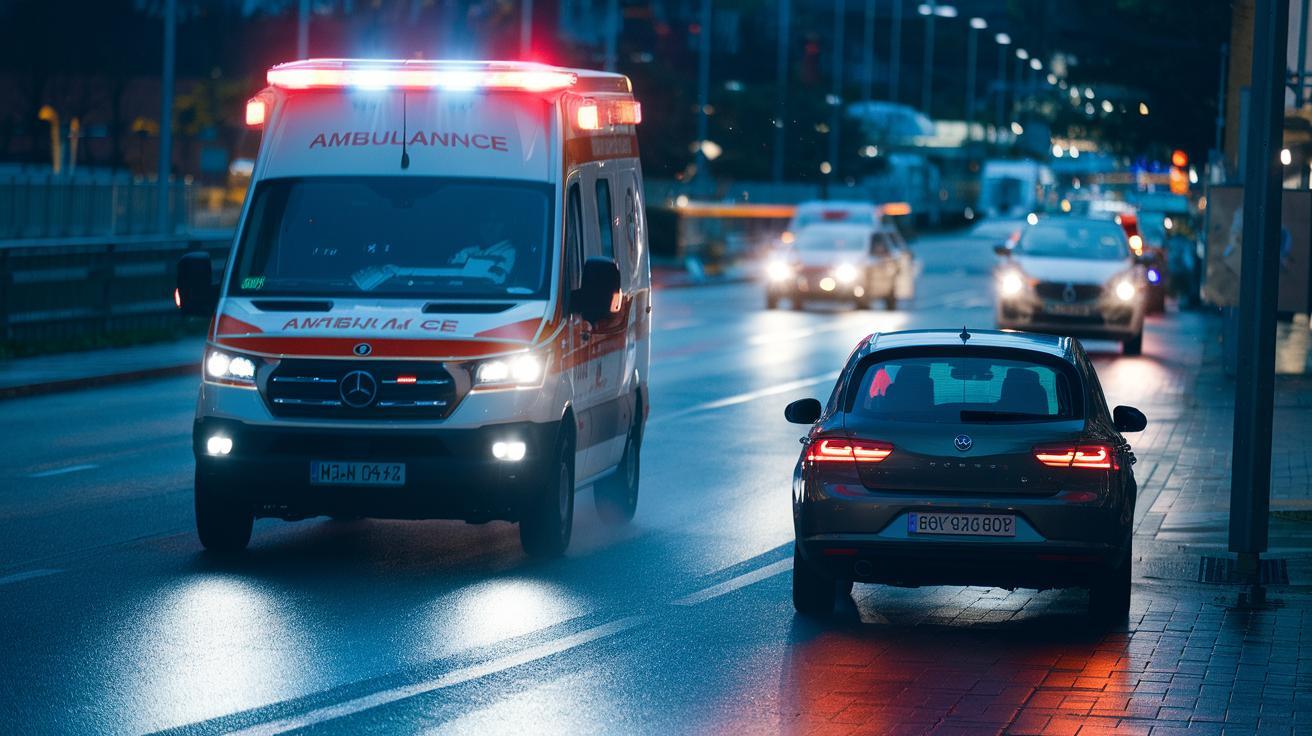
‘LPT: if a loved one is taken in an ambulance, do not follow us to the hospital. Go there on your own time and own route.’
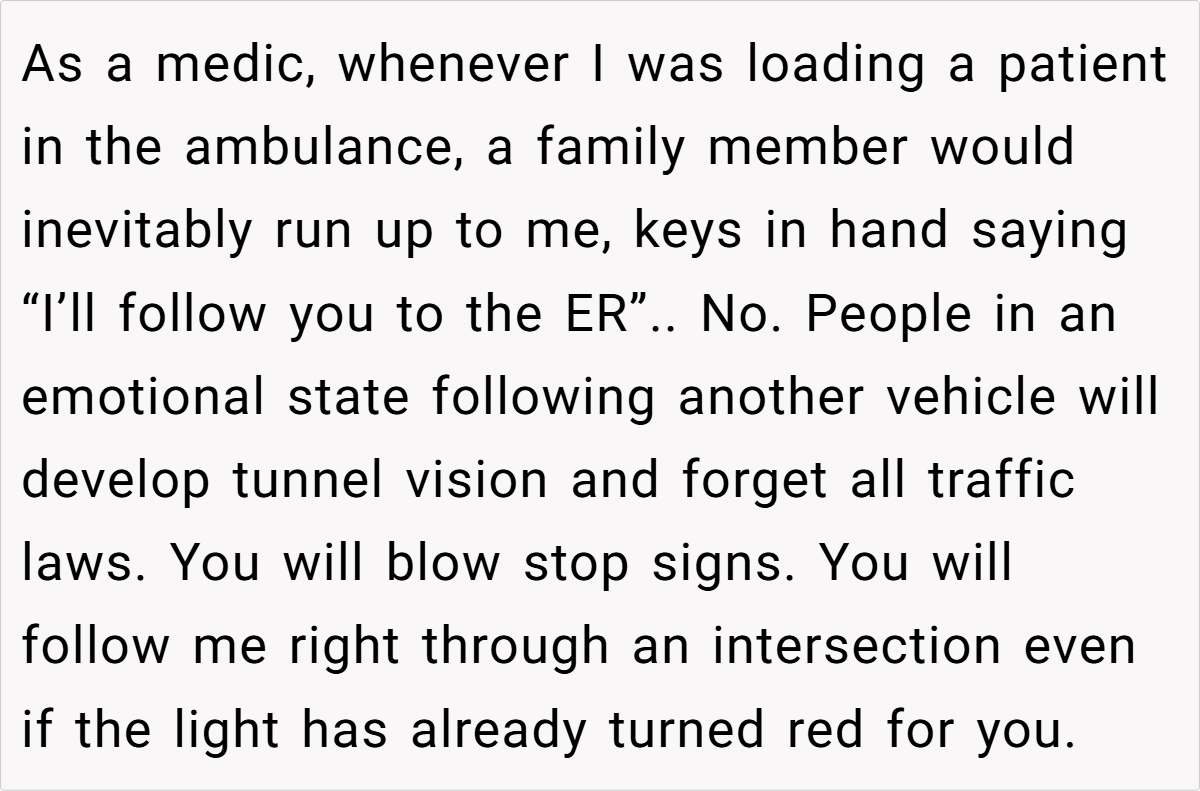
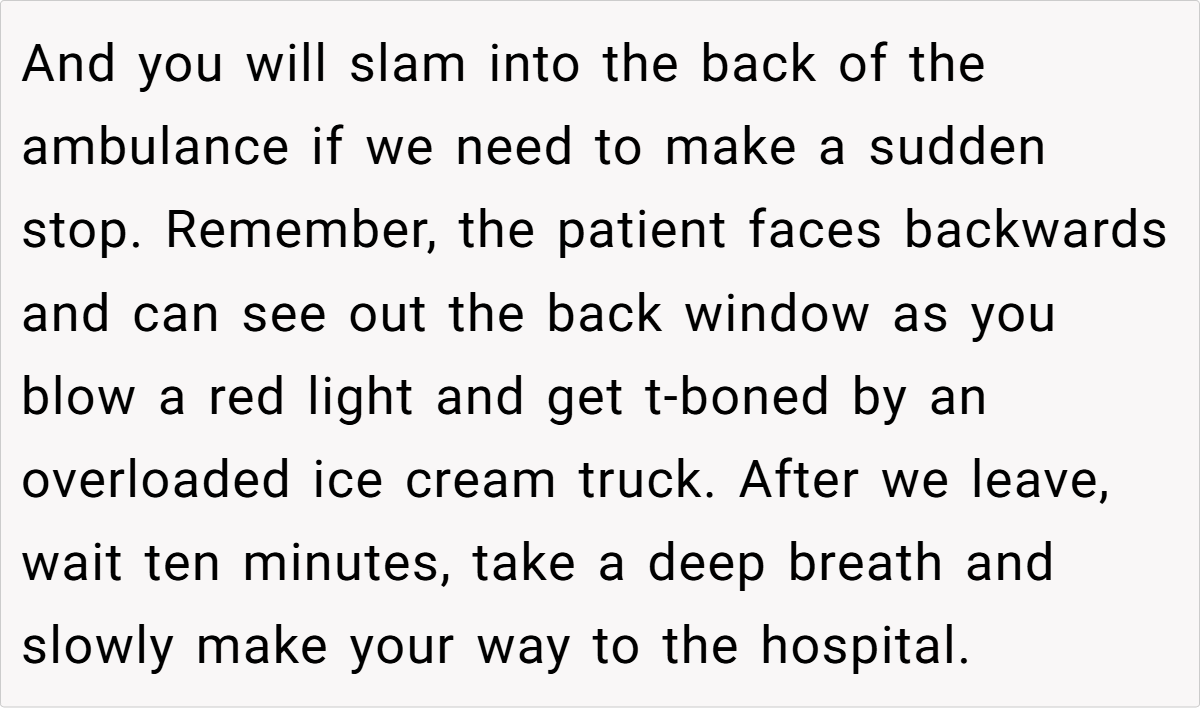
Following an ambulance out of concern might appear instinctive, but it’s fraught with peril. The OP’s account reveals how emotional distress can cloud judgment, leading to dangerous driving behaviors. A panicked driver may inadvertently ignore traffic signals, putting themselves and others at risk. Such actions not only complicate emergency operations but can also escalate the crisis—a stark reminder of how love can sometimes fuel irrational decisions.
Analyzing the situation further, the clash between heartfelt urgency and practical safety becomes evident. While the instinct to be present is understandable, it ignores the critical need for controlled, deliberate driving.
Statistics from the National Highway Traffic Safety Administration show that distracted and emotional driving significantly increases accident risks. This post humorously yet poignantly underscores how even well-intended actions can backfire, echoing broader concerns in emergency response protocols.
Broader societal patterns emerge when we look beyond the personal. Modern urban traffic is a high-stakes environment where split-second decisions can have lasting consequences. For example, a 2017 Reuters report detailed incidents where rushed decisions led to avoidable collisions, highlighting that even public figures aren’t immune to such lapses. The balance between personal involvement and public safety is delicate—an equilibrium that demands clear-headed decision-making in the midst of turmoil.
In this context, the wisdom of medical professionals rings true. Dr. Sanjay Gupta once stated, “In the midst of crisis, our instincts can sometimes betray us, leading to decisions that put ourselves and others at risk.” His insight, widely echoed in emergency medicine discussions, reinforces the idea that stepping back to assess the situation can be lifesaving. Embracing calm and measured responses, rather than succumbing to raw emotion, is crucial for maintaining safety on the roads.
Ultimately, the solution lies in channeling our concern into actions that truly help. Waiting a few extra minutes to compose oneself isn’t just about following protocol—it’s about safeguarding lives. Local authorities and hospital guidelines exist for a reason, ensuring that emergency vehicles can operate unimpeded.
For those looking for further advice on safe practices during emergencies, resources like the NHTSA’s guidelines provide valuable insights. By following such recommendations, we honor our loved ones’ safety without inadvertently endangering others.
See what others had to share with OP:
Here are some hot takes from the Reddit community—candid, humorous, and refreshingly honest. They remind us that even in tense moments, a touch of levity can help us see the bigger picture. These popular opinions might be exaggerated, but they reflect real concerns shared by many:

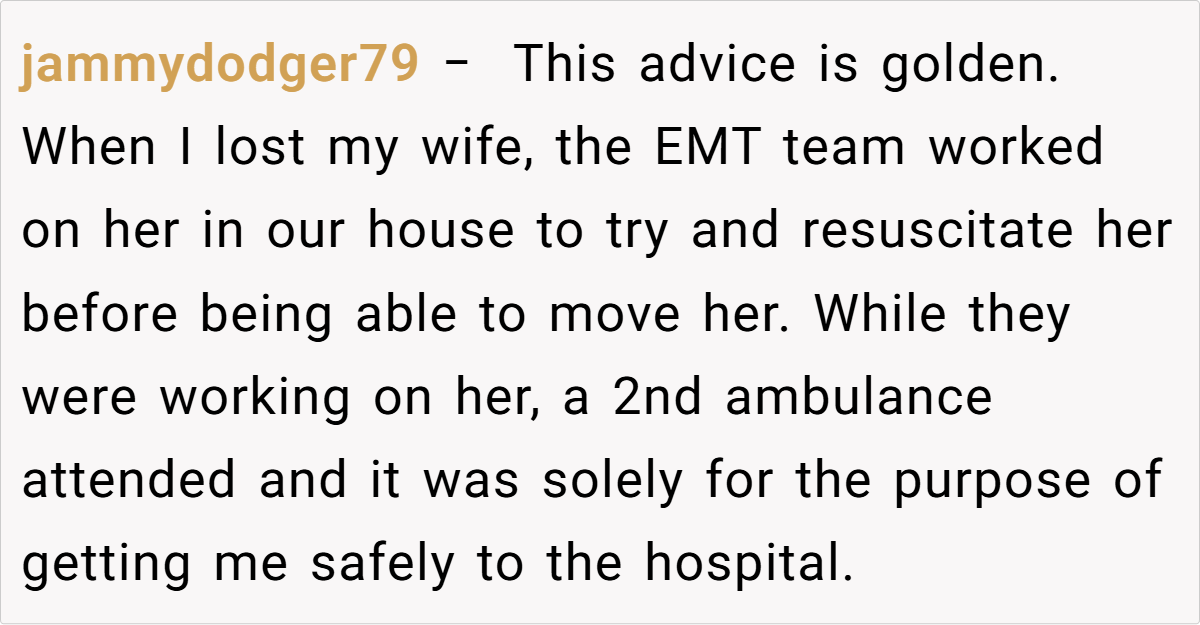
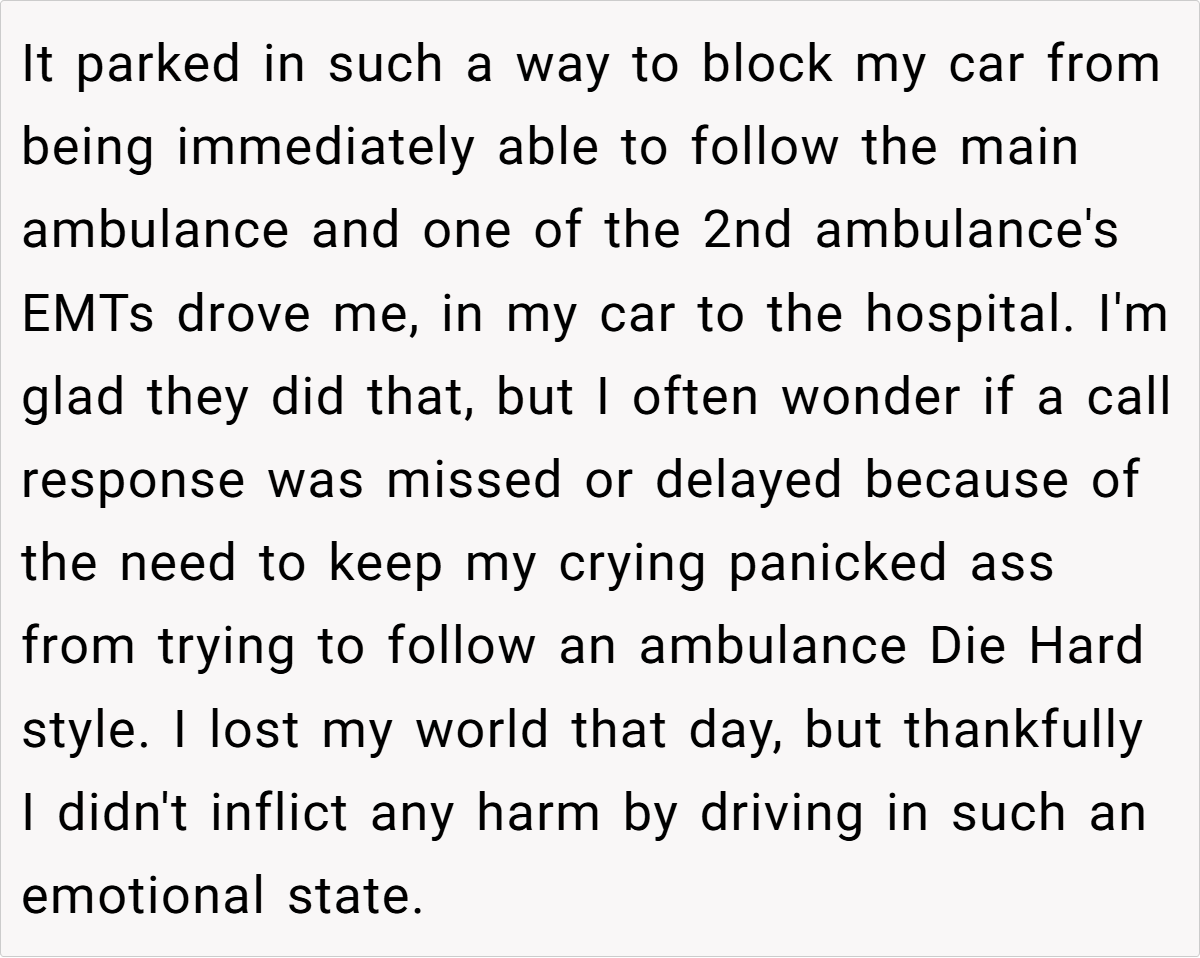
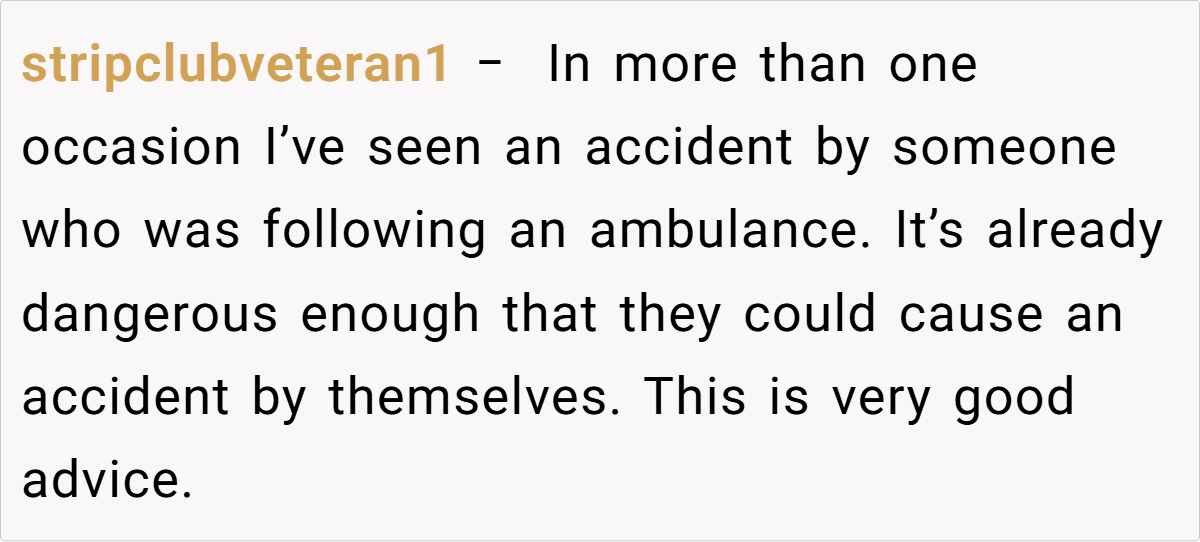
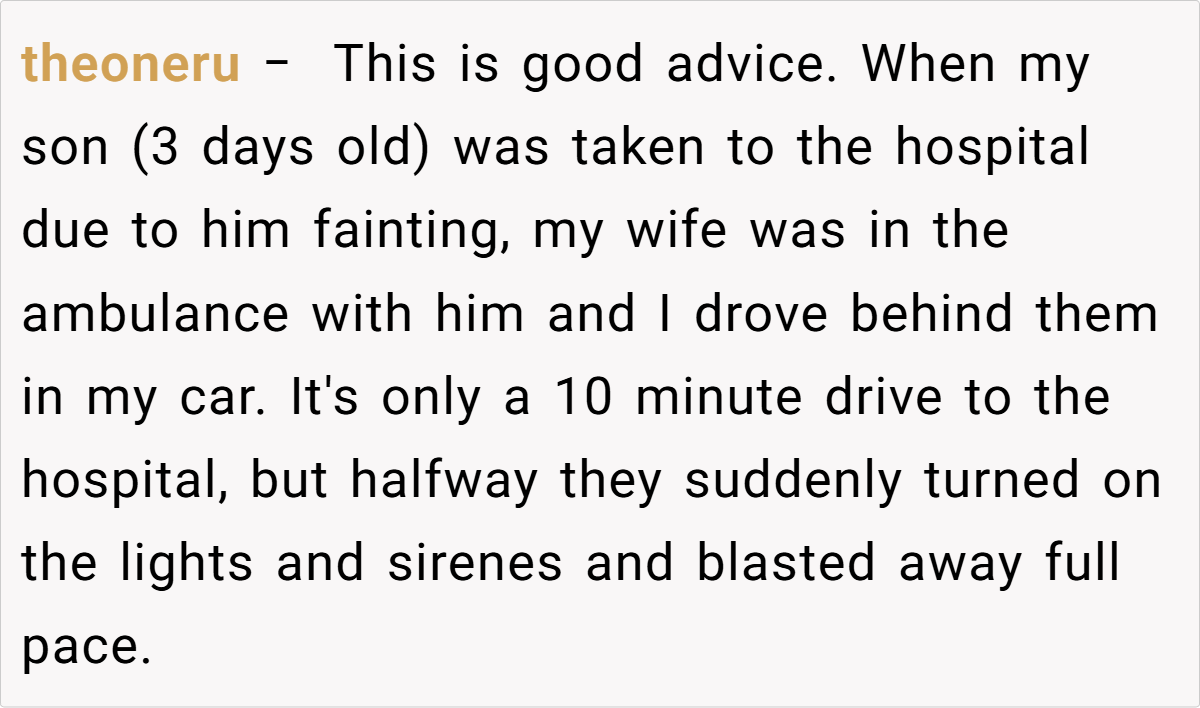
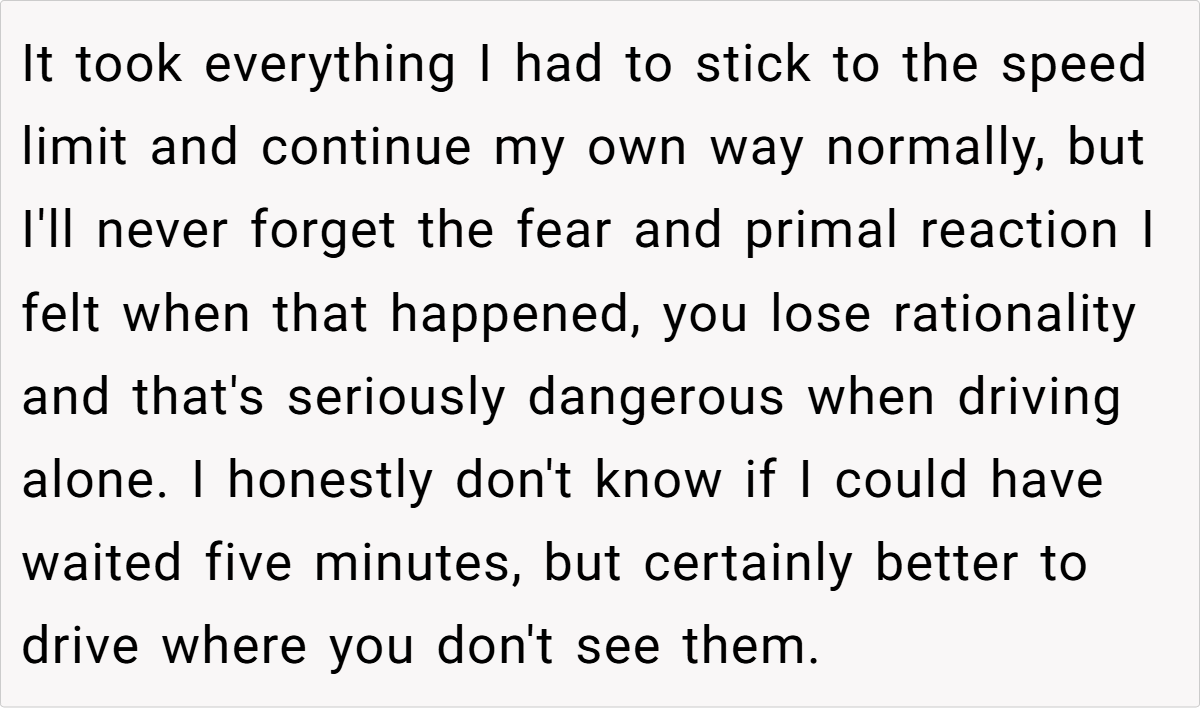
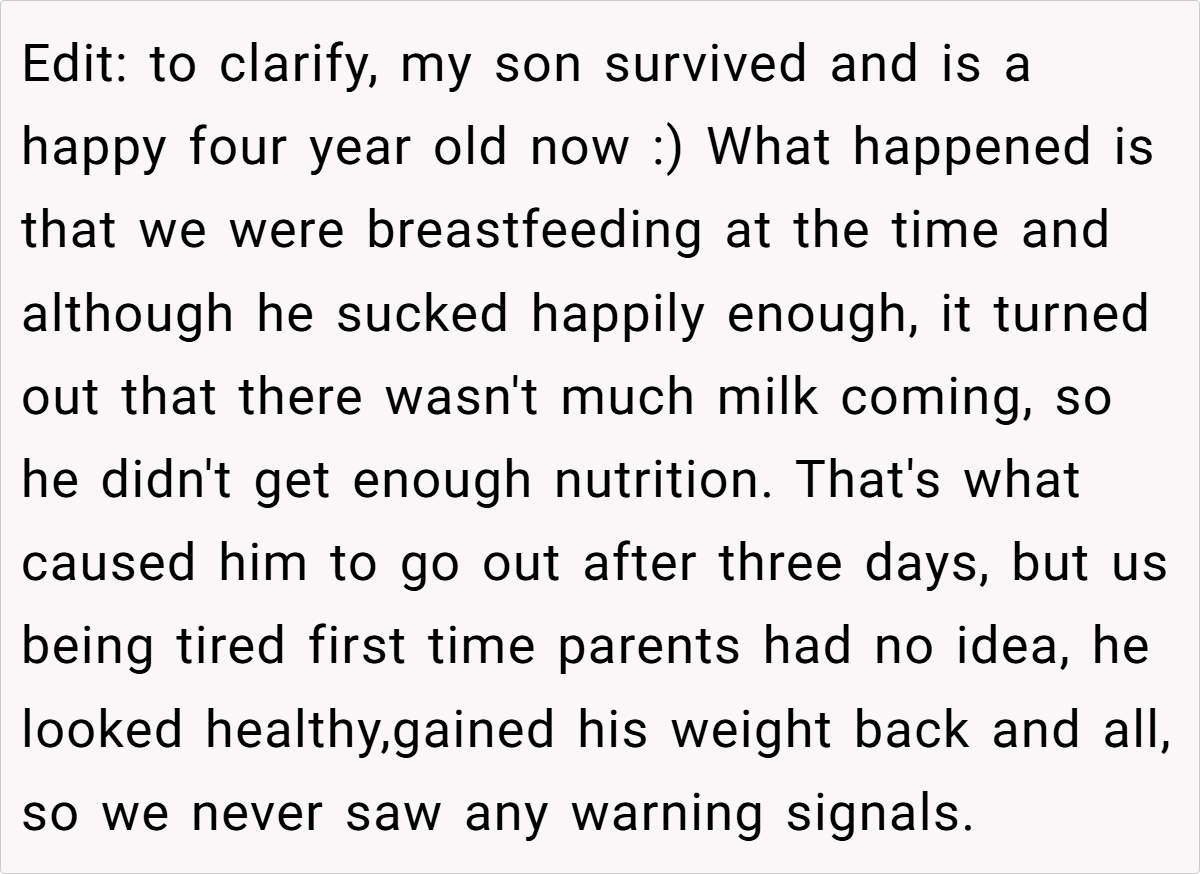
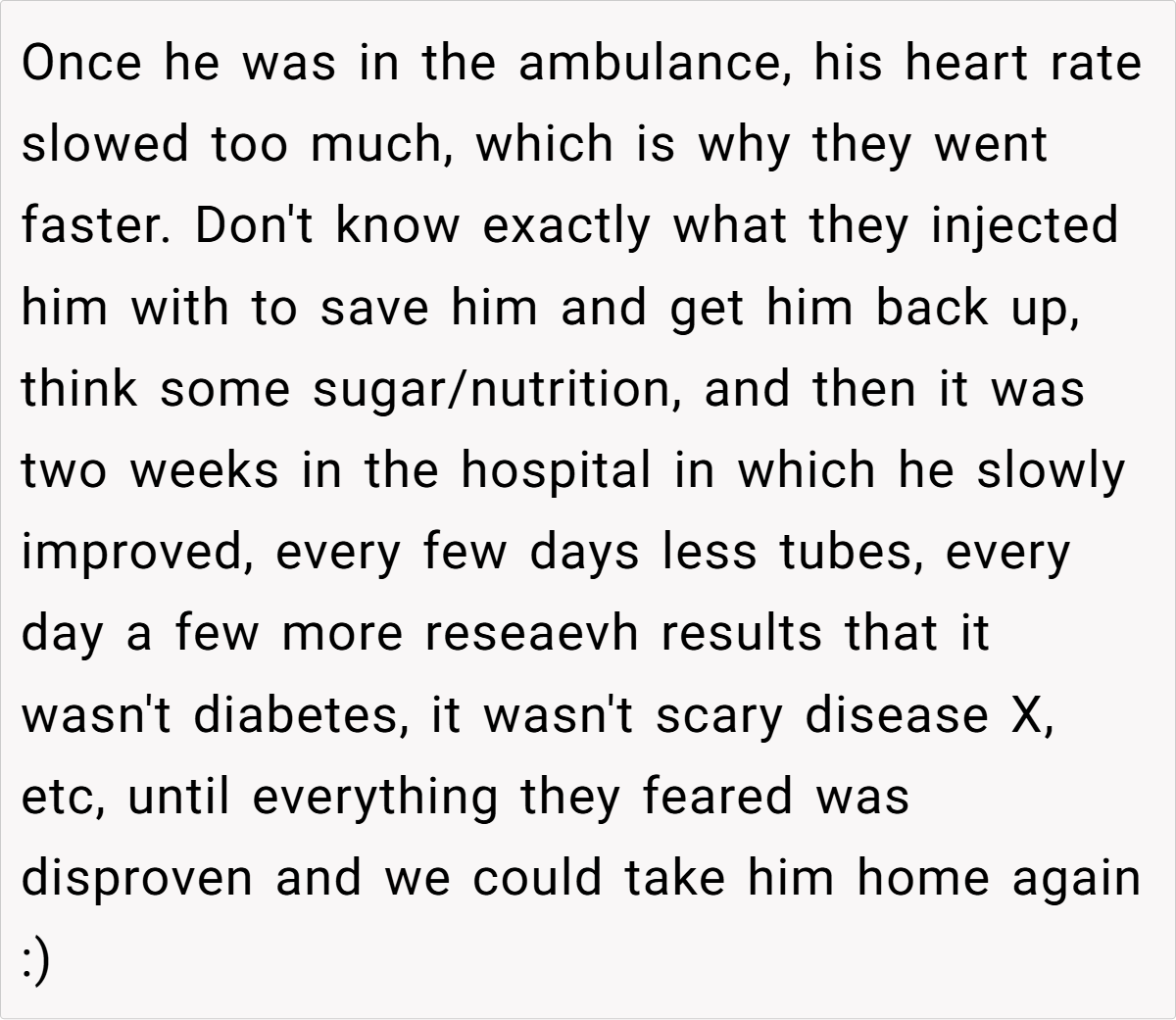


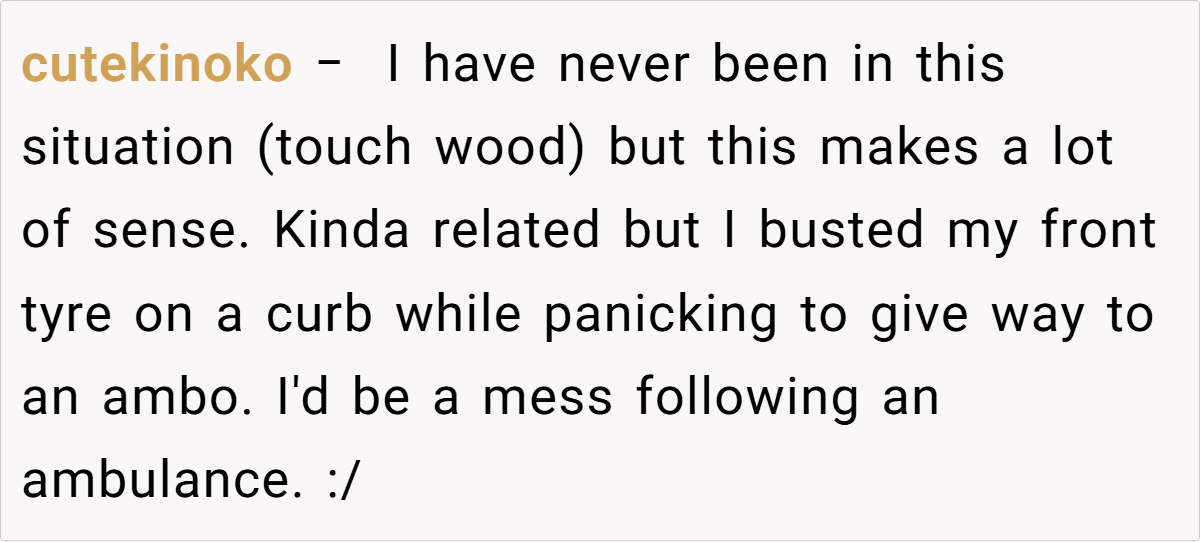

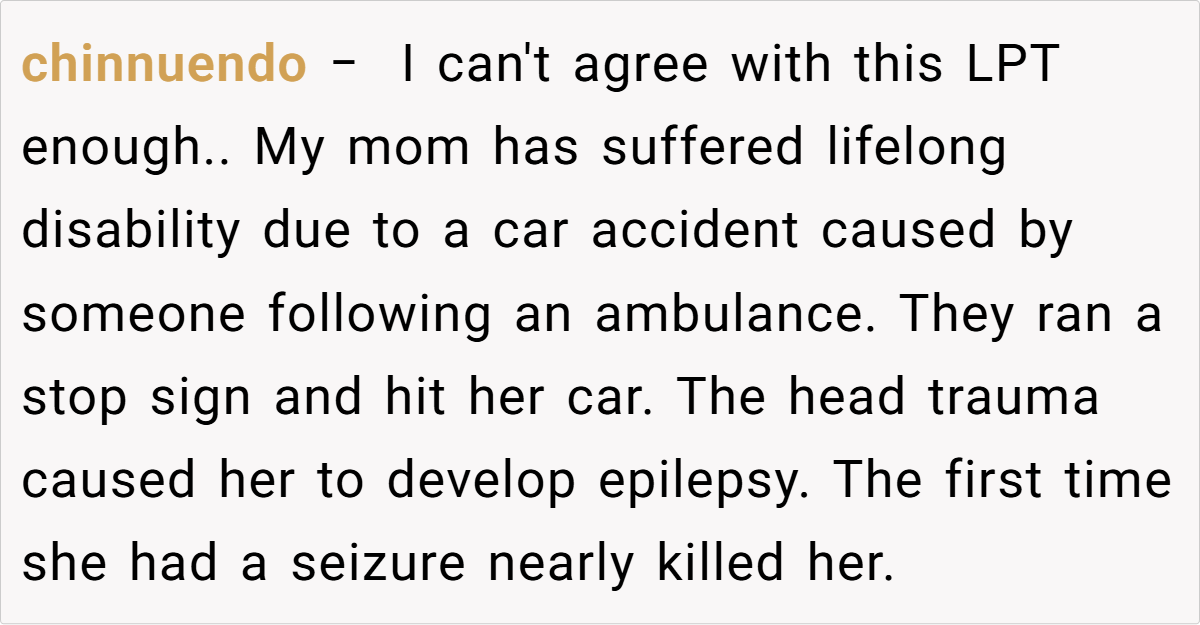
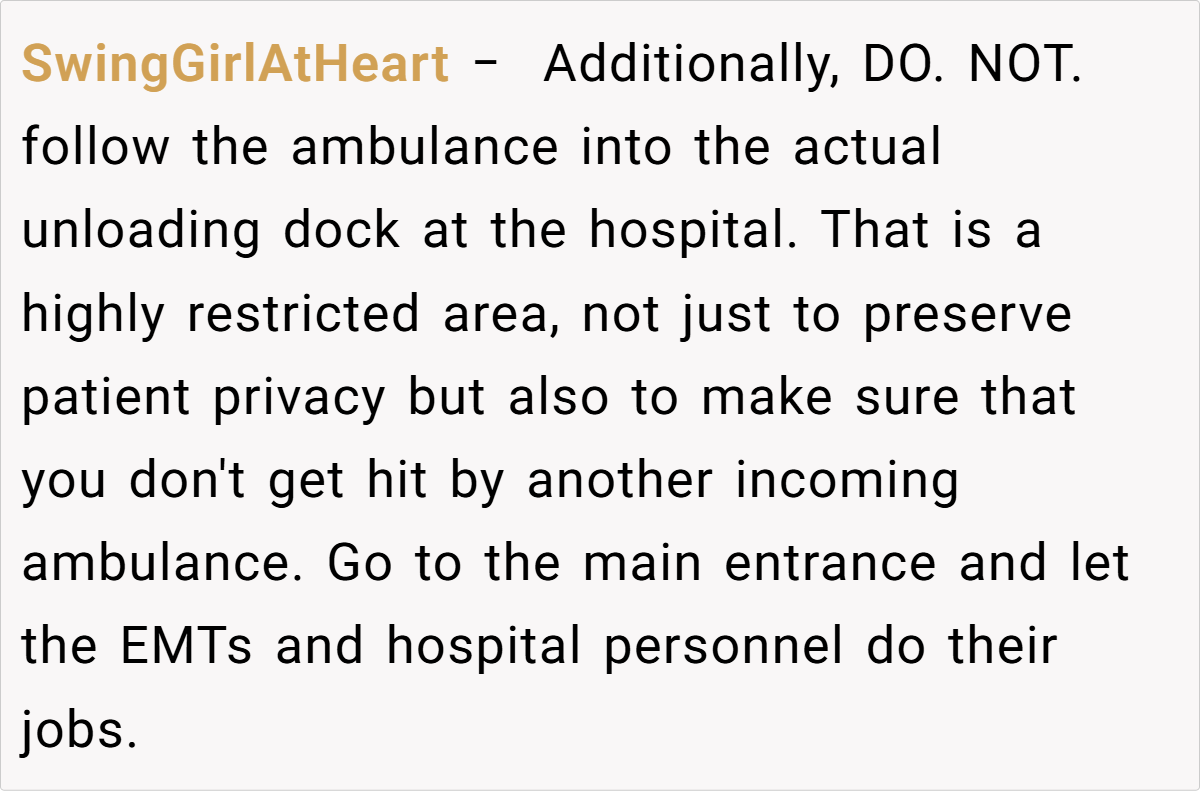
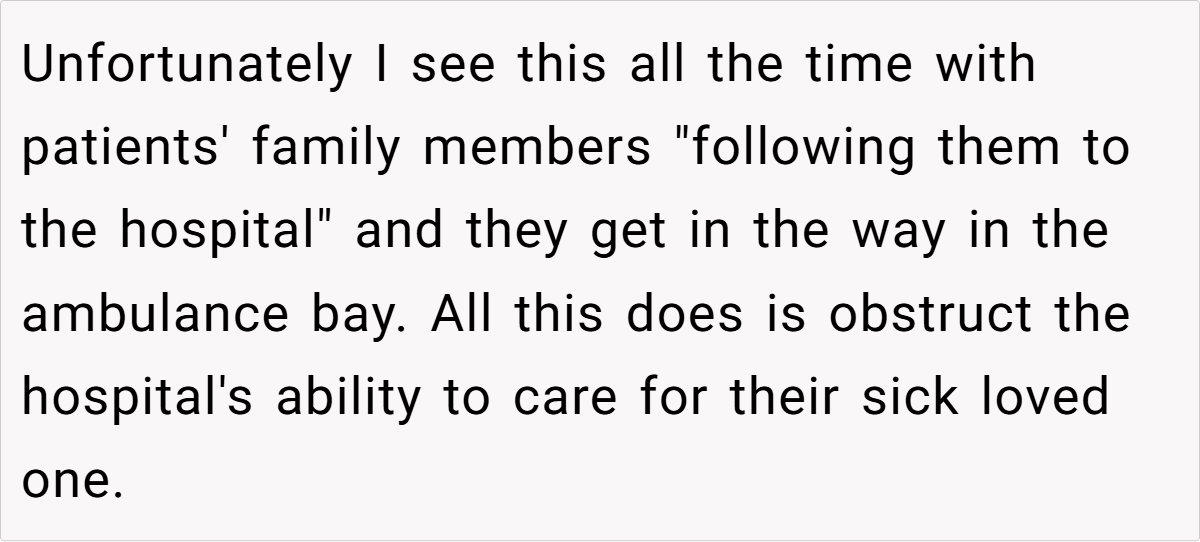
In wrapping up, it’s clear that while our hearts may urge us to follow an ambulance out of love and concern, practicality and safety must prevail. We invite you to share your thoughts and personal experiences—after all, every perspective enriches the conversation. What would you do if you found yourself in a similar situation? Let’s discuss the balance between emotion and caution, and learn from each other’s insights.

